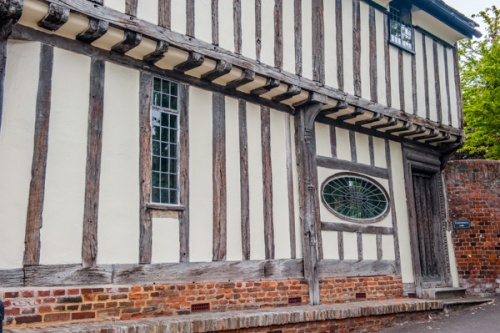
The original name of this attractive town in north-west Essex was simply 'Walden', from the Saxon words for 'Valley of the Britons'. It gained the prefix 'Saffron' when it became a centre for cultivating crocuses in the medieval period.
Though the autumn-flowering crocuses actual produced a purple flower, they were used to make perfume, and a yellow dye for cloth, hence the name. The crocus was also used to flavour food and in medicinal concoctions for catarrh.
The medieval prosperity brought by the crocus trade is evident by the number of attractive timber-framed buildings clustered around the market square.
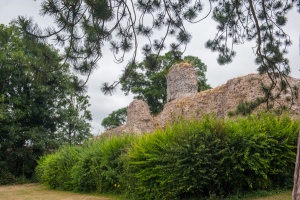
The area was settled from prehistoric times, and there are ancient earthwork remains near the town. Much of the street layout we see today in the centre of Saffron Walden follows the course of the bailey enclosure of a 12th-century castle built by Geoffrey de Mandeville, Earl of Essex.
Mandeville also founded a Benedictine Priory and established the first market here in 1141. He rebelled against the crown and lost his life, and the castle eventually crumbled into ruin. It stands today near the museum, one of the oldest purpose-built museums in the country, founded in 1835.
A stone's throw from the museum is the parish church of St Mary, the largest parish church in Essex, and one of the best examples of Perpendicular architecture in East Anglia. Within the church are a series of 15th-century memorial brasses, and a series of carved niches in 14th century Decorated Gothic style. The historical highlight of the church is the tomb of Thomas, Lord Audley (d. 1544), Lord Chancellor under Henry VIII and builder of the original mansion of Audley End House.
Audley's new house was created out of the monastic buildings of Walden Priory, which he bought from the king after the priory had been dissolved. Audley's Tudor house was completely rebuilt in the 17th century to create a magnificent mansion.
The house stands on the south western edge of Saffron Walden and is perhaps the jewel in the crown of stately homes owned by English Heritage. The interior of the mansion is exquisitely decorated with a superb collection of fine furniture and art, and the house stands in picturesque grounds dotted with follies and bridges designed by Robert Adam.
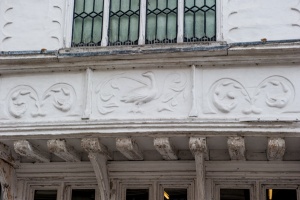
The local tourist board publishes a walk-about guide to the town, and it is well worth getting one, as it guides you on a route that takes in many of the superb medieval and Jacobean houses that make Saffron Walden's historic core so enjoyable.
Many of these historic buildings feature elaborate patterns of pargetting; a type of exterior plasterwork that is common to East Anglia. One of the oldest and most intriguing timber-framed building is the town youth hostel on Myddylton Place, which dates to at least the 15th century.
One of the most intriguing historic features of the town is not a building at all, but a turf maze, built in the late medieval period, with a path that is over a mile long as it twists and turns its way to the centre of the maze. The maze is 100 feet in diameter and is thought to be the largest in Europe.
Other historic buildings include:
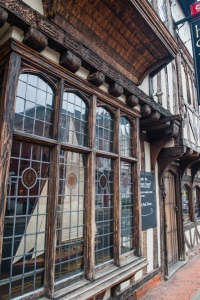
The Market Place
There has been an active market in Saffron Walden since the 12th century. The first market was held at Geoffrey de Mandeville's castle but a new charter was confirmed in 1236 by Henry III. Yet a third charter was granted in 1514 by Henry VIII, giving the Guild of Holy Trinity the right to hold a market.
And just to confuse things, the medieval market was not held in the present market place but in an area to the south where you now find street names such as Butter Market, Pig Street and Mercers Row.
As I can attest, the market is still quite busy; we visited Saffron Walden on a Saturday, and the area around the market place was packed to overflowing with people!
One of the most interesting buildings on the market place is one of the most recent - the Barclays Bank building was designed by Eden Nesfield in 1874. Another Victorian addition is a very grand drinking fountain, built to commemorate the marriage of The Prince of Wales and Princess Alexandra of Denmark in 1863. Nearby is the Italianate Library, originally the Corn Exchange, built in 1848.
The Rows
At the corner of King Street and Cross Street is a large 15th-century hall house, with a roof that was raised in the 18th century. This area was the mercantile hub of medieval Saffron Walden, and in 1630 three-quarters of the shops in town were situated in The Rows. Several of the houses on Cross Street show Tudor shop windows; these had shutters which could be opened to create a counter and an overhead canopy to protect goods on sale.
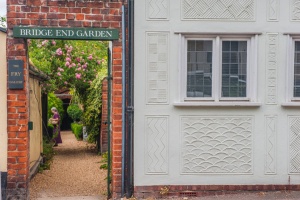
At the corner of High Street and King Street is Cross Keys, a 15th-century inn. Another historic inn is The Eight Bells on Bridge Street, with 15th and 16th-century wings and a projecting first-floor jetty.
Near the inn - at the bridge over Madgate Slade - is a memorial to Chief Constable Campling, who was murdered after leaving the Eight Bells one night. The alleged killer was brought to trial but acquitted.
Another ancient inn is The Old Sun, on Market Hill. This lovely old building contains a number of 14th-century shops and is decorated with wonderfully detailed pargetting, including a pair of figures said to represent the mythical giants Gog and Magog (or they might be The Wisbech Giant and Tom Hickathrift; no one is really sure).
Castle Street is full of attractive older buildings, many dating to around 1500. On Castle Street is the Fry Art Gallery, opened in 1856 by Francis Gison, who developed the Bridge End Garden. This beautiful public area is one of the delights of Saffron Walen, with a rose garden, sunken garden, wilderness, Dutch Garden, and Maze.
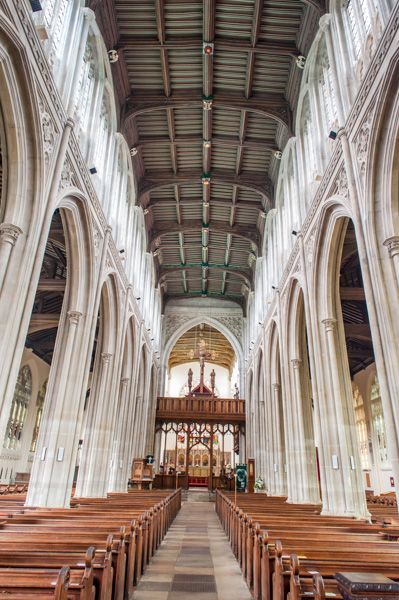
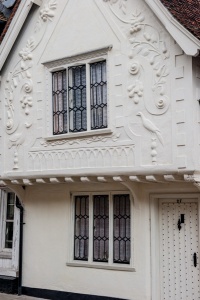
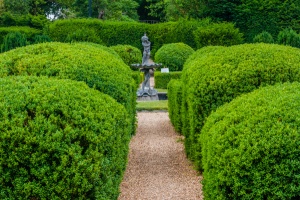
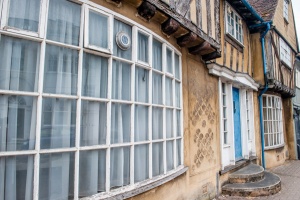
house, Bridge Street
About Saffron Walden
Address: Saffron Walden,
Essex,
England
Attraction Type: Town
Location: On the B184, junction 9 of the M11
Website: Saffron Walden
Location map
OS: TL545385
Photo Credit: David Ross and Britain Express
HERITAGE
 We've 'tagged' this attraction information to help you find related historic attractions and learn more about major time periods mentioned.
We've 'tagged' this attraction information to help you find related historic attractions and learn more about major time periods mentioned.
Find other attractions tagged with:
NEARBY HISTORIC ATTRACTIONS
Heritage Rated from 1- 5 (low to exceptional) on historic interest
Walden Castle - 0.4 miles (Castle) ![]()
Saffron Walden Museum - 0.4 miles (Museum) ![]()
Saffron Walden, St Mary's Church - 0.5 miles (Historic Church) ![]()
Audley End House - 1.3 miles (Historic House) ![]()
Wendens Ambo, St Mary's Church - 2.4 miles (Historic Church) ![]()
Priors Hall Barn - 4.1 miles (Historic Building) ![]()
Ickleton, St Mary's Church - 4.5 miles (Historic Church) ![]()
Thaxted, St John the Baptist Church - 6.2 miles (Historic Church) ![]()
Nearest Holiday Cottages to Saffron Walden:
Fulbourn, Cambridgeshire
Sleeps: 2
Stay from: £313 - 1382
More self catering near Saffron Walden



